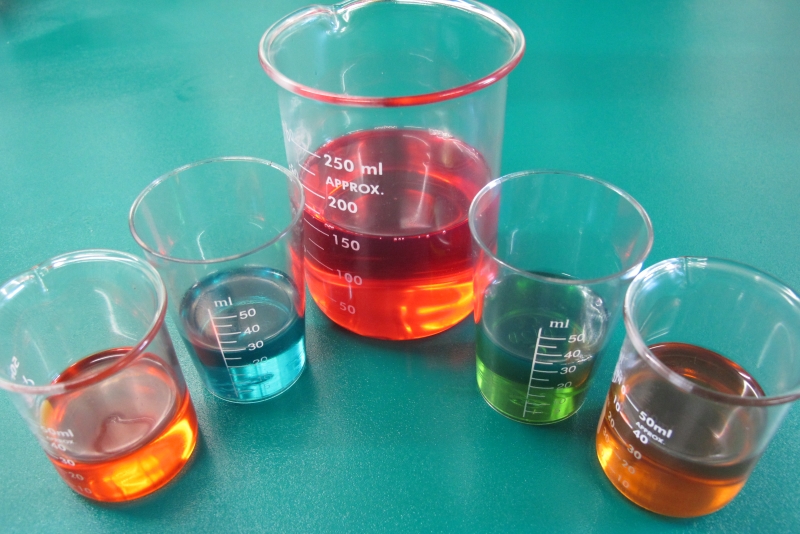You have no items in your shopping cart.
Suspension Fluids - Part 1 - Introduction
 Suspension fluids are simple right? They're a bit slippery and they slow your fork and shock down a bit more when you turn that rebound knob.
Suspension fluids are simple right? They're a bit slippery and they slow your fork and shock down a bit more when you turn that rebound knob.
Well yes they are. Mostly. But from there it gets ridiculous really quickly. Some are just oils and nothing special. But the headaches start when you start looking to buy some. You'll see ancronyms like RSF, RFF, FO, SF, VG, ISO, VI SUS, abbreviations like wt, cSt and weird numbers like 125-150 coupled with all sorts of descriptions that sound more flowery than those describing $10 bottles of wine.
So as usual we're here to do all the hard work, research and testing, cut through the marketing fluff and tell you exactly what you need to know to make your suspension work like it should.
How are fluids identified?
Suspension fluids are mostly graded by SAE WT (5wt, 10wt etc). This rating system puts fluids into viscosity (thickness) bands measured at 100°C. Unfortunately fluids change hugely between 100°C and the 15-40°C that most bike suspension runs at. So we need a better system.
Instead we use Centistokes (cSt) to compare oil viscosity (thickness). 1 cSt is the viscosity of water at 20°C and Centistoke readings for oil are standardised at 40°C (we'll ignore the 100°C reading for now). Simple. 15 cSt oil (at 40°C) is 15 times thicker than water; 100 cSt oil is 100 times thicker than water. We're still going to tell you the SAE wt's though, because that's the big number on the bottle. But we'll only do that with a complete description including brand and type.
Which oil do you need?
 Now what cSt oil do you need for your fork or shock? Well here's where it gets interesting. Here at Shockcraft we geek out a bit too much on stuff like this. So much in fact that we measure viscosity of oil we drain from new forks and shocks to check it is or isn't what it is supposed to be. We find manufacturers aren't always filling their forks and shocks with the oil they claim they are!
Now what cSt oil do you need for your fork or shock? Well here's where it gets interesting. Here at Shockcraft we geek out a bit too much on stuff like this. So much in fact that we measure viscosity of oil we drain from new forks and shocks to check it is or isn't what it is supposed to be. We find manufacturers aren't always filling their forks and shocks with the oil they claim they are!
So before I bore anyone to tears with the full Shockcraft Oil Training Manual (8 pages and growing) here is the equivalent of our Motorex oils to the real factory fluids we have measured:
• Manitou, all forks and shocks ever: 15 cSt@40°C: Motorex 2.5 wt
• Rockshox Motion Control: 15 cSt@40°C: Motorex 2.5 wt
• Rockshox Charger Damper: 15 cSt@40°C: Motorex 2.5 wt
• Rockshox Monarch/Vivid (most of them): 15 cSt@40°C: Motorex 2.5 wt
• Marzocchi forks (all since ~1997): 23 cSt@40°C: Motorex 5 wt
• Fox, fork & shock dampers (most of them): 35 cSt@40°C: Motorex 7.5 wt
• Xfusion, all fork & shock dampers: 35 cSt@40°C: Motorex 7.5 wt
I now expect a whole lot of emails telling me some of the above numbers are wrong. But they aren't. I have test data and I'm happy to defend it. Note these are just the damper and shock fluids and are only the factory equivalents. Lubrication fluids (lower leg bushings) are very different and we'll get to those later.
To finish off, an example of how useless SAE wt alone is as a suspension fluid identifier. Here are three fluids all measuring 15-15.1 cSt @ 40°C:
• 2.5 wt Motorex Racing Fork Oil
• 5 wt Shell Advance Fork Oil
• 10 wt Castrol Fork Oil
Moral of the story: Only use SAE WT to identify oil if you have the brand and full description, otherwise your suspension is going to be terrible.
Written by Dougal
August 2016
You may also be interested in:
Suspension Fluid Series: Part 2 - Lubrication
Further Technical Articles & Resources to help with your bike maintenance.







